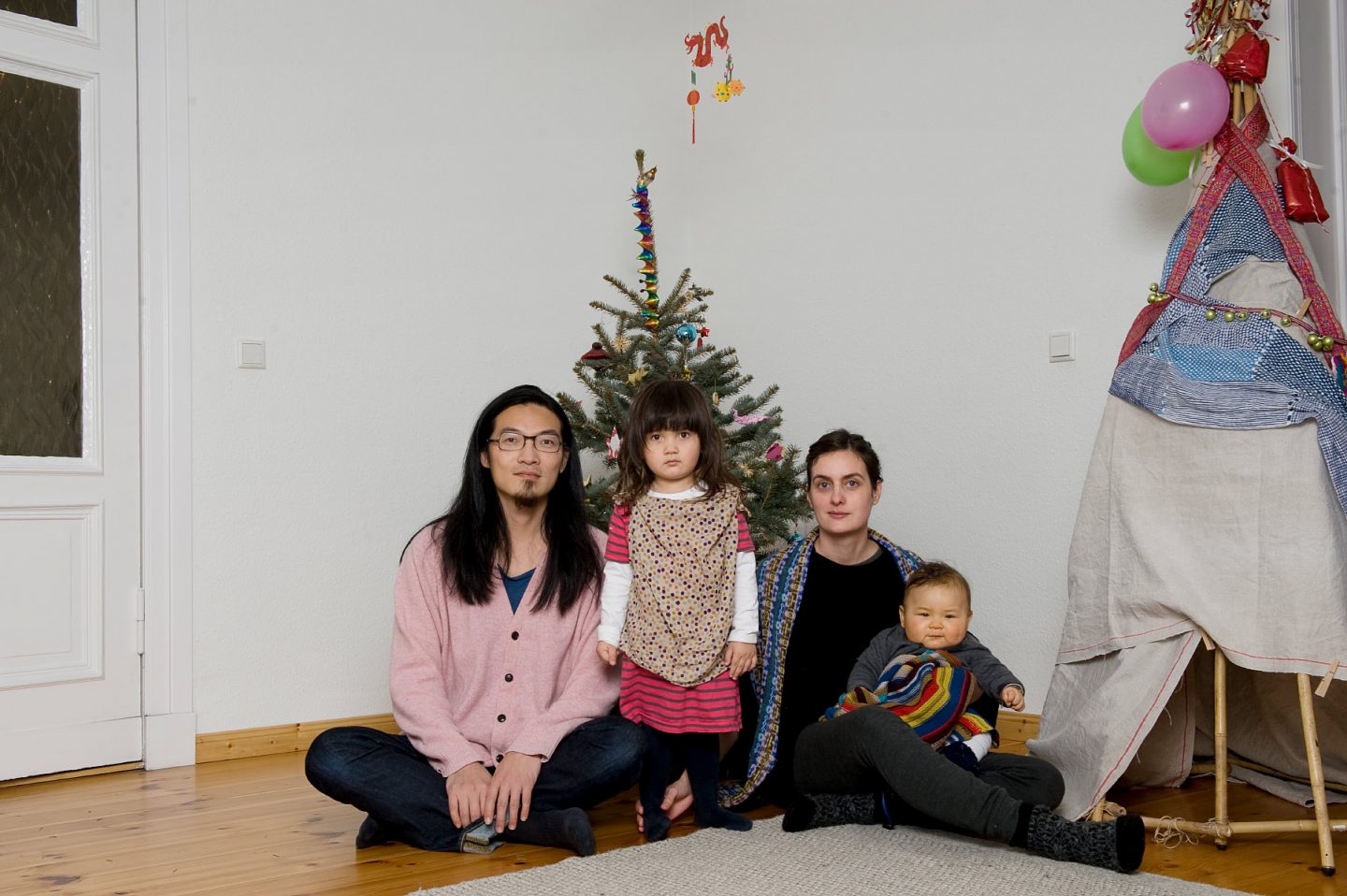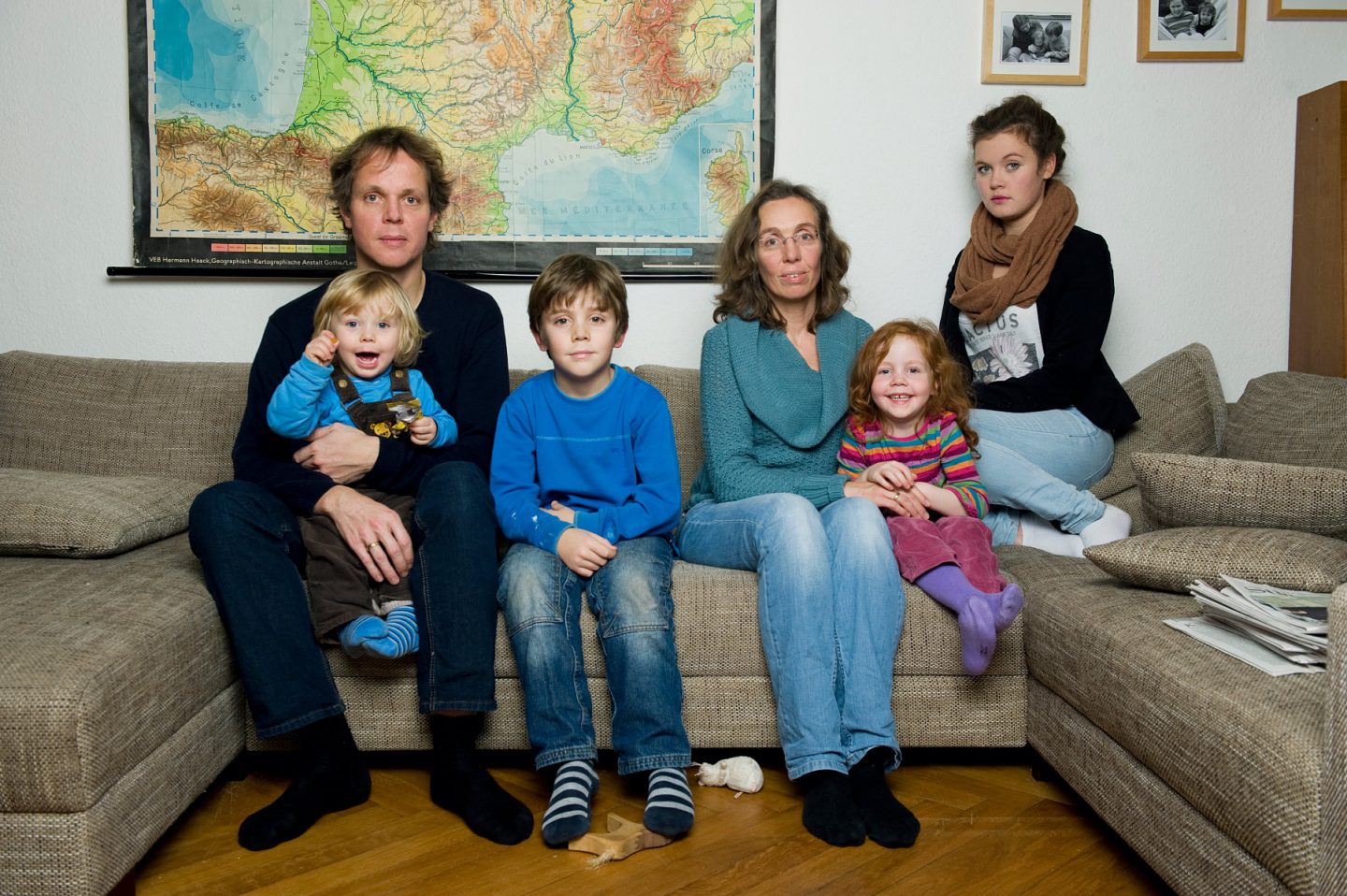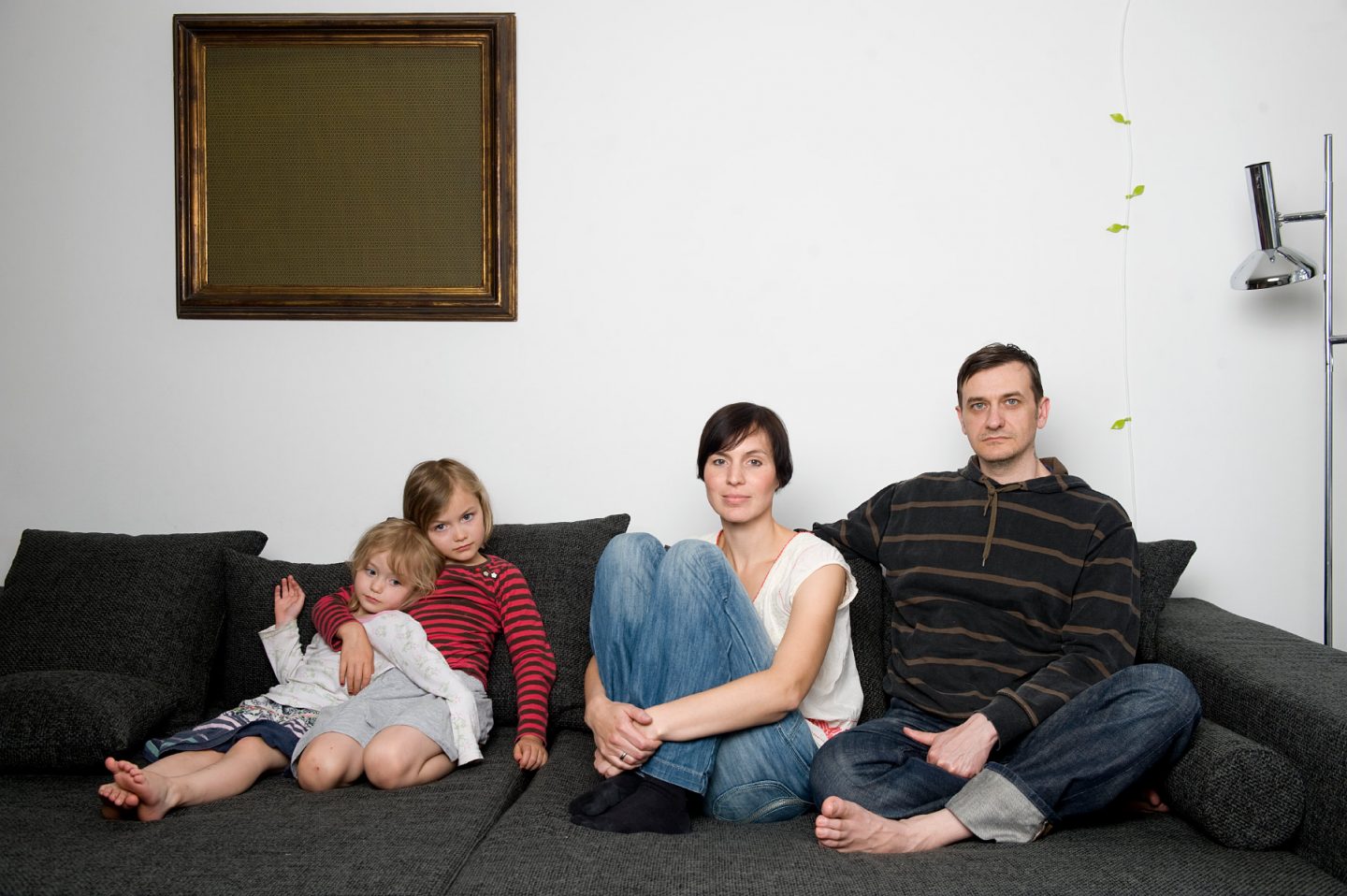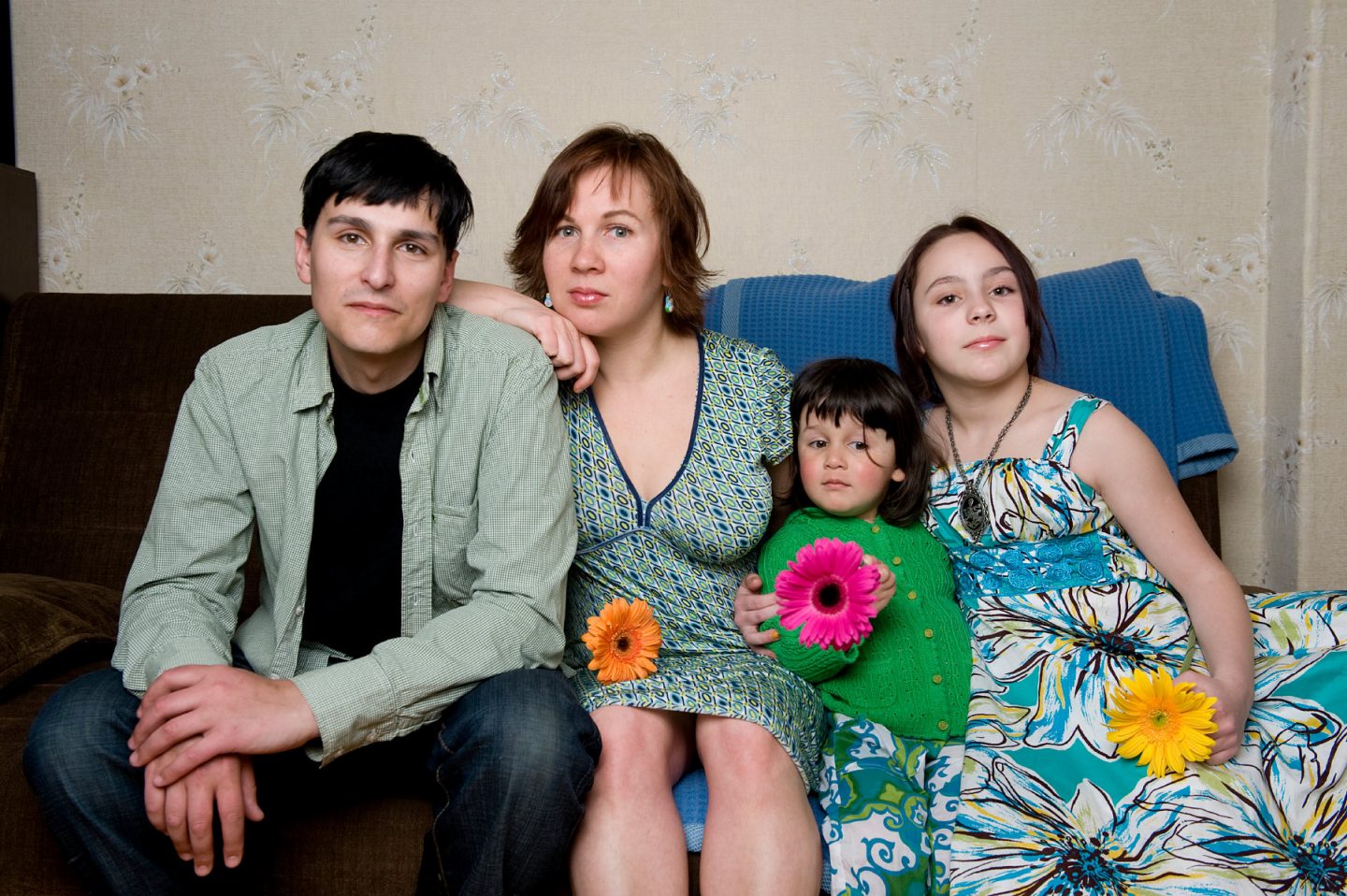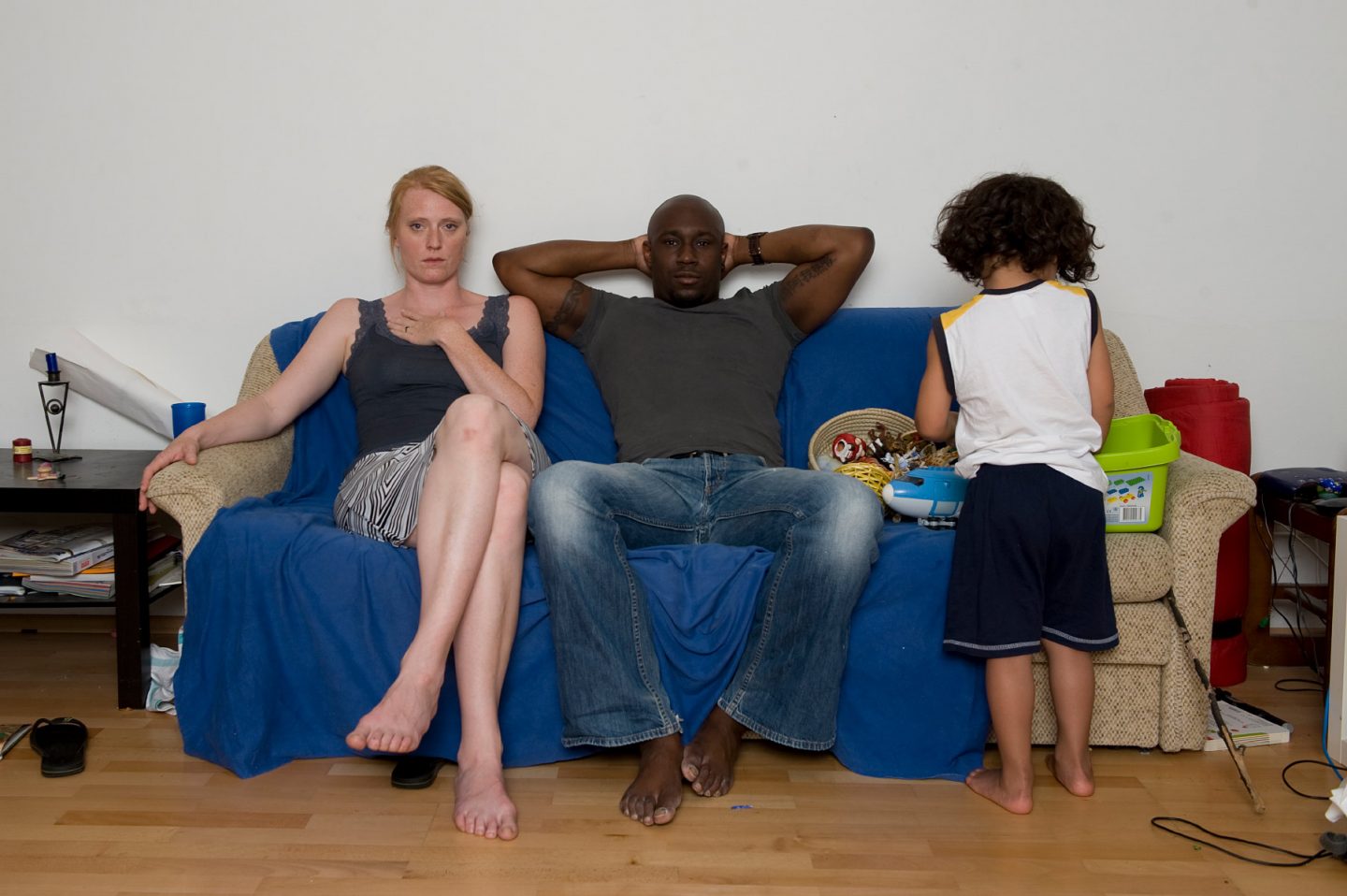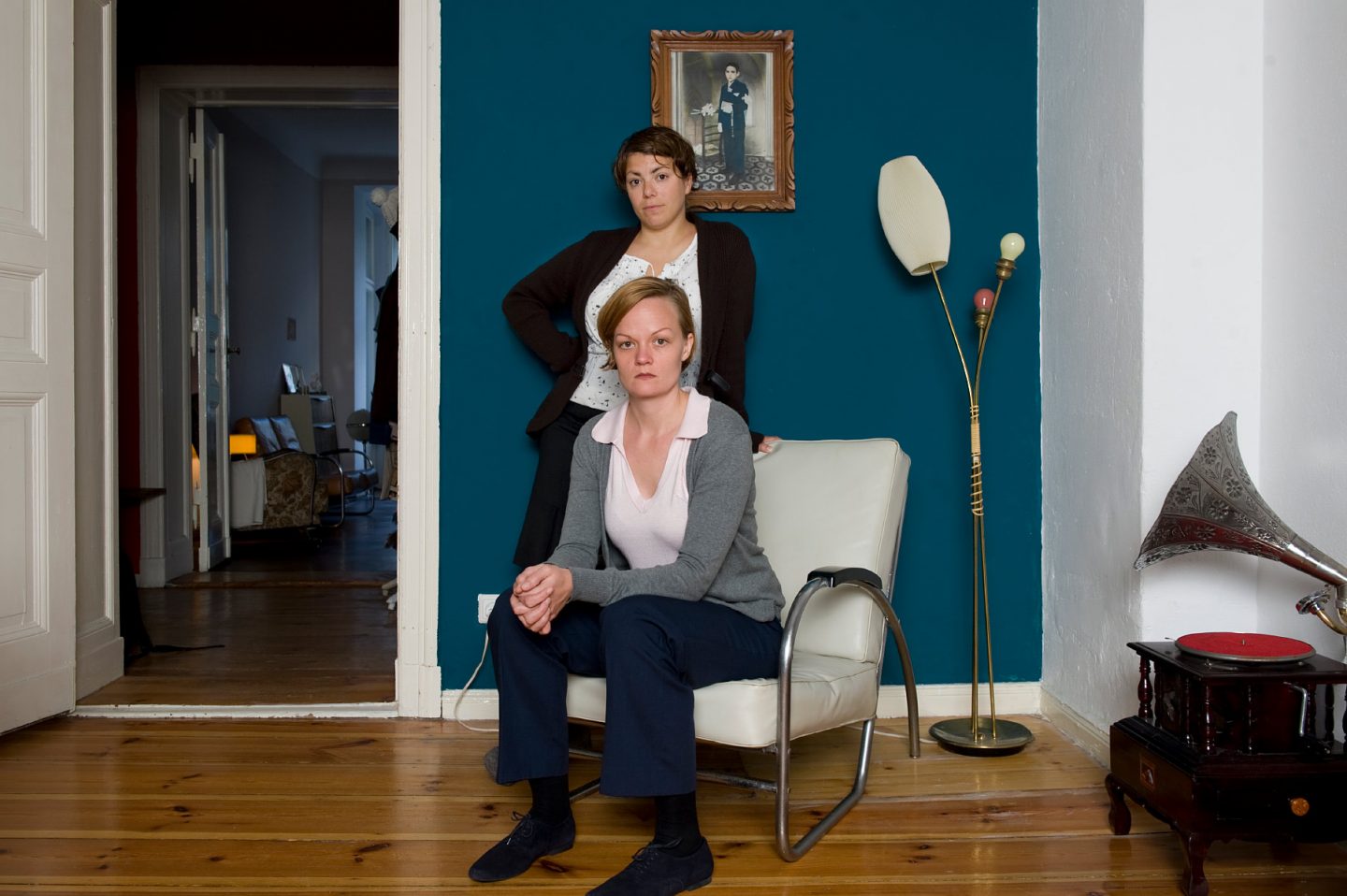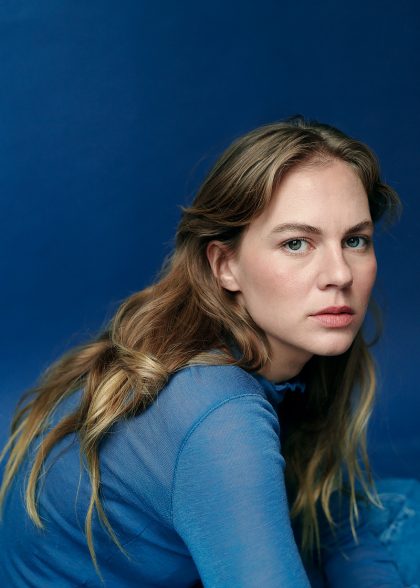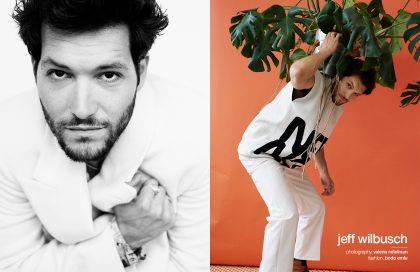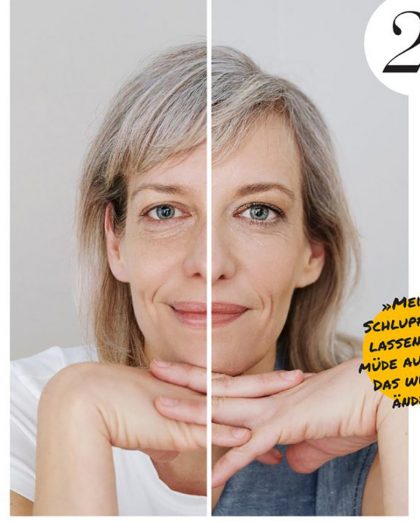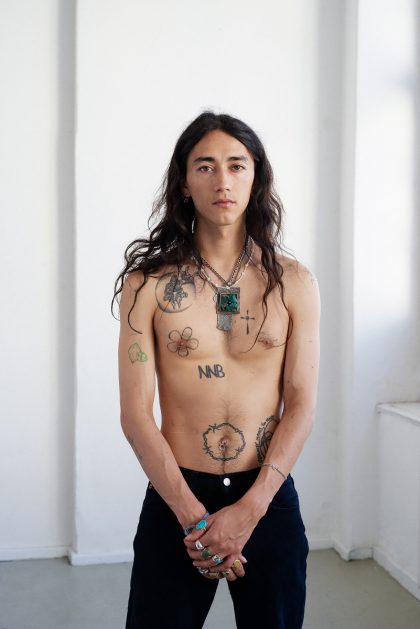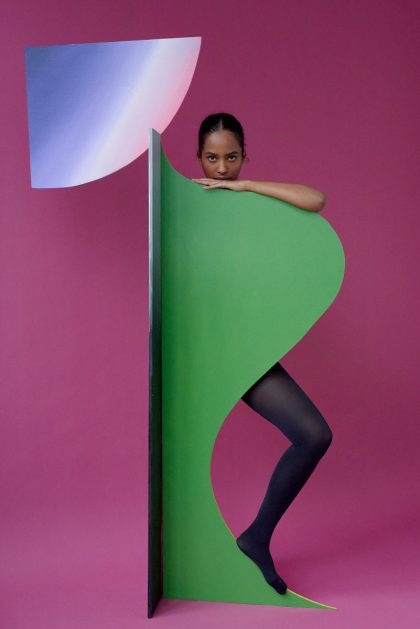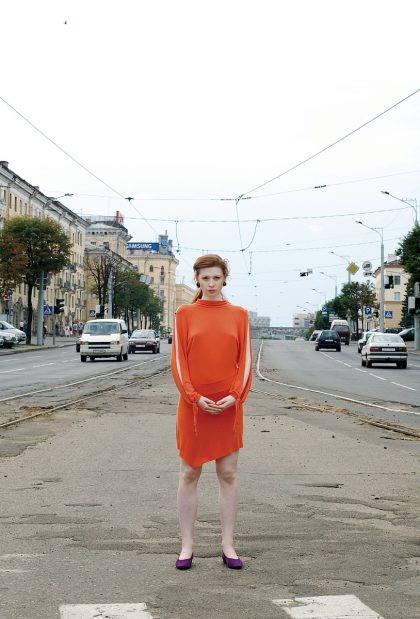Introduction by Heike Hartmann
Families are nothing we chose. In her portrait series Family Ties, Valeria Mitelman explores the intricate bonds that bind us to our closest relatives through the medium of photography. She invites families to come together for a photo session in their own homes, while leaving it up to them to decide who is to be included in the portraits. Separate paths of life thus intersect in front of the camera, prompting individuals to interact and engage with their family ties. As they position themselves, the family members compose scenes of closeness and distance, show affection and reveal dependencies. Moreover, in responding to the camera, the families appear to express emotions that might never get verbalised in their everyday interactions. Whereas some of the photographs seem to reflect an everyday situation, others reveal the fragility of the captured moment. While the group portraits articulate a shared sense of belonging, the spaces between the individual sitters reveal some to be cautiously holding their ground, some rejecting conventions, and some torn between personal aspirations and shared ties. This resistance to being drawn into the family’s shared space notwithstanding, already their participation in the project makes all sitters accomplices in a notion of the family.
The photographs turn the intimacy of the home into a stage upon which family members act out their understanding of themselves and each other, as well as notions of the family. They face the photographer at eye level, returning the gaze of the camera. Furniture and memorabilia join clothing and postures as props that express and assert identity. Some interiors seem to have outlived generational changes, others appear rather provisional – seemingly random settings for the beholder, while intimately known, of course, by those inhabiting these spaces. The family’s living space thus functions as a repository of a shared past, and in some of the pictures one can catch a glimpse of absent loved ones, commemorated in portraits on the walls. The history shared by family members also speaks from dress and bodily habitus that signal on yet another level, how knowledge is passed on from one generation to the next.
Valeria Mitelman’s project is informed by her acute awareness of the pictorial traditions of family representation. The medium of photography has, since the mid-nineteenth century, played a vital role in representing individuals and family units. By then, the wide spread of photographic studios had made it affordable for everyone to have their picture taken. While it was initially necessary for sitters to maintain an often uncomfortable pose due to long exposure times, technical improvements soon made it possible for even fleeting emotions to be acted out in front of the camera. The photographic studio thus opened up a new social space that enabled clients to compose an image of how they desired to be seen and remembered. Photography provided them with a means of demonstrating and distributing affection, ambitions and social status. It is for this reason that photography has been of great relevance for efforts at recording and historicizing the integrated family unit in popular culture. While we might be tempted to simplistically conceive of photographs as mere testimonials of our lives, the act of photographing, in fact, constructs our family bonds while purporting to record them. With the spread of simpler, more affordable cameras, family members became increasingly involved in the process of portraiture as both authors and audience. Today, taking family photos is an integral part of everyday life, and even technically imperfect snapshots are often valued highly, due to the intensity of memories that are associated with the moment the photograph records.
Contrary to these private uses of family photography, Valeria Mitelman’s work makes these images available to spectators who are not participants, but interpreters of these scenes. Her photography invites viewers to detect and investigate details, to puzzle over family likenesses and different degrees of kinship, to imagine the private backgrounds and hidden histories. And although we have never met her sitters, we can nevertheless relate to the collective imaginary that informs these photographs due to the conventions of the family portrait that they participate in.
Valeria Mitelman’s Family Ties thus draws on the convention of the family photo album but –in blurring the lines between private and public memories – imbues it with a specific quality. Her family album does not chronicle the intimate memories of a single group of relatives but offers staged moments of self-representation, arranged in a manner that invites viewers into a typological investigation of this genre. Her album elicits a comparative gaze that requests of the viewers to engage with these families, to notice the similarities and differences between the pictures and to discover the singularity of every family in the moment of the photographic encounter. In bringing these images together, the book allows us to catch a glimpse of the very essence of family. While the plurality of family constellations portrayed provides us with an insight into how much contemporary understandings of family might differ from those portrayed in the mid-nineteenth century, the series does not unsettle the concept of the family per sé, but rather reaffirms it. For Valeria Mitelman, families continue to provide answers to questions of belonging.
These family portraits map as much a private as an artistic space that the photographer disclosed, representing three biographical stations of Valeria Mitelman’s own journey: Minsk, where she grew up and to which she regularly returns, Edinburgh, where she spent three years before moving to Berlin in 2010, where she continued her work. The portrait project accompanied her experience of living in these different environments where, by taking her camera into the residences of her friends and acquaintances, she presents an idea of what it can mean to live in a specific place and feel at home.

